Cheese is one of the most diverse dairy products out there. It comes in all kinds of shapes, flavors, textures, and colors. But have you ever considered making cheese at home?
Well, if you haven’t yet, now’s your time to shine.
Making cheese at home is almost like creating eatable art. Sure, you have clear-cut steps to follow. But you will also need to sense its texture, taste, and smell to make beautiful cheeses.
What’s more, cheesemaking is a fun activity, especially if you’re a lover of all things cheese. It’s also money-saving.
You can make fancy gourmet cheeses—from traditional brie to French camembert—for a fraction of the cost.
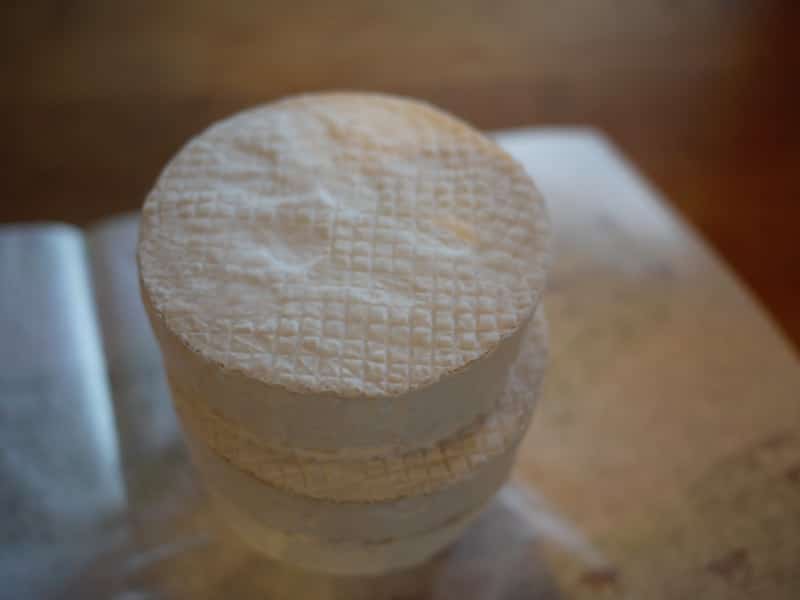
And don’t forget about all the mouth-watering savories you can cook! Shred some cheese on top of your pasta, team it up with crackers, bake cheesy cakes, or enjoy a wedge of cheese with some red wine.
Are you ready to embark on your cheese-making journey? Read on to learn about the process of making cheese at home with some helpful tips and easy-to-use equipment.
Processing of Cheese Explained
How does milk turn to cheese? Why is milk acidified? And how does cheese get its right texture and flavor? We’ll discuss all of that and more in this section.
To begin with, the process of cheesemaking is thousands of years old. Early cheese-makers used to store milk in vessels made from sheep or goat stomachs.
The rennet in the animal stomach would split the milk into curds and whey. And cheese would be obtained.
Thankfully, modern-day cheese-makers have it easier. They have access to better equipment and readily available ingredients.
Here is the basic process of turning milk to cheese, broken down into 8 steps.
Step 1 – Milk Preparation
Milk is the main ingredient in cheese. The type of milk used—creamy, toned, or skimmed, affects the taste and texture of the cheese.
Also, cheese from cow milk tastes different from the one made of goat or sheep milk.
At the start of the cheese-making process, the milk is made to sit for some time. It naturally starts producing lactic acid.
Many cheese-makers also heat the ripening milk. They then let it cool to 90°F (32°C) so it is ready for the starter cultures.
Good to know: It takes about ten pounds of milk to make just one pound of cheese.
Step 2 – Acidification and Coagulation
Next, cheese-makers turn the milk sour. And how? By acidifying it. This is generally done by adding starter cultures (friendly bacterias) to it. Different cultures produce different types of cheeses.
Then the milk is coagulated. In simple words, the milk turns from a liquid state to a semi-solid state. Cheese-makers add an enzyme called rennet to the milk.
At this point, the pH of the milk changes and it starts developing a cheesy flavor.
Step 3 – Allowing the Milk to Curdle
As the milk solidifies, it splits into curds and whey. Curds are the coagulated lumps used to make cheese. Whey is the liquid byproduct.
Good to know: Whey is a rich source of protein. Many cheese-makers make protein shakes and bars using whey.
Step 4 – Cutting the Curds
Once the curd and whey mixture has separated, it’s time for some cutting. Cheese-makers use long knives to cut through the curds. This process helps to further separate the curds and whey.
To make harder cheeses like parmesan and cheddar, the curds are cut into tiny chunks. For softer cheeses like mozzarella and ricotta, larger curd pieces are cut.
Afterward, the whey is drained, leaving the curds to form a mat.
Step 5 – Cooking the Curds
The curds are heated to expel the remaining whey completely. Cooking, when accompanied by gentle stirring, speeds up the process.
After some time, the curds will shrink, looking somewhat like gelatinous solids. The whey is drained again.
Step 6 – Salting the Curds
Salt adds to the flavor, texture, and aroma of the cheese. It also helps preserve cheese, suppressing the growth of spoilage microorganisms.
Salt is added to curds in one of several ways. Some cheese-makers sprinkle salt on loose curds. Others immerse fresh cheese in brine.
Step 7 – Moulding and Pressing the Curds
It’s now time to mould the curds. There are different moulds available—round, rectangular, triangular, etc., depending on the type of cheese.
At the same time, external pressure is applied on the curds to give the cheese its characteristic shape and make it compact. This also helps expel any remaining moisture.
Step 8 – Ripening the Cheese
By this stage, the curds have already become cheese. But ripening is important to give the cheese its right flavor. It also helps sharpen the taste.
The cheese is kept in a room with moderate temperatures, high humidity, and adequate ventilation until it ripens. While some cheeses are aged for just a month, some are aged for several years.
Once ripened, the cheese is ready to be packaged.
Equipment You’ll Need to Make Cheese at Home
Milk and starter cultures aren’t the only things you’ll need for making cheese at home. You’ll also need to get the right equipment and tools.
The good part is that you don’t have to go on a shopping haul for cheese-making equipment. You will find most of them in your kitchen.
Take a look at these essential tools and supplies for making cheese at home.
Large Stock Pot
Since making cheese requires a lot of milk, you’ll need a large pot for the purpose. A large pot also means plenty of room for heating and stirring.

Unchipped enamel or stainless steel pots are best for making cheese at home. Also, make sure the pot is heavy-bottomed.
Thermometer
While making cheese, you will need a dairy thermometer. It will come in handy while maintaining the correct temperature.
Any basic thermometer will do, but it’s best to have one that clips to the side of your pot. You can also consider getting a waterproof thermometer.
Measuring Cups and Spoons
Cheese-making depends a lot on accuracy. So, you will need measuring cups and spoons for making cheese at home.

Glass and stainless steel utensils are the best. They are non-corrosive and easy to clean.
Curd Knife
Curd knives have thin, stainless steel blades with rounded tips. The blades are long enough to reach to the bottom of the pot.
Long-Handled Skimmer
A skimmer, or slotted spoon, is an essential tool in the cheese-making process. It’s used to add starter culture, incorporate rennet, and stir and scoop the curds.
Nylon, stainless steel, and plastic skimmers are the most common ones you’ll find on the market.
Idea: How about opting for an eco-friendly bamboo skimmer? It’s non-reactive, comfortable to hold, and easy to clean.
Cheese Moulds
Moulds give the right shape to your cheese. Most moulds have holes to allow the whey to drain properly.
Cheese moulds are commonly made of stainless steel and plastic. You may also find wooden or clay moulds, but they are more difficult to clean and sanitize.
Here are some cheese moulds that can help you get started.
Cheesecloth and Butter Muslin
Cheesecloth is used for draining the curds. It’s a single-use material made of woven cotton. Butter muslin, on the other hand, can be washed, sanitized, and reused.
If you don’t have any cheesecloth at home already, you can order some online.
Cheese Making Kits
You can also just buy a complete kit for making cheese at home so you don’t have to worry about individual items.
For the DIYer in you, the market is full of cheese making kits. They’re great for first-timers looking for easy ways to make cheese.
These kits include everything from citric acid to cheese salt and rennet. Plus, you’ll usually find a thermometer, butter muslin paper, cheese strainer, and a recipe booklet in them, too.
With a complete kit, all you need to start making cheese at home is some milk. Here are some great kits for making cheese that you may want to try.
How to Make Cheese at Home
Now it’s time to make cheese at home! It’s cheaper than store-bought cheeses and is a delicious hobby to enjoy with family and friends.
While different types of cheeses have different recipes, it’s best to start with a basic recipe and then move on to the more sophisticated ones.
Follow this step-by-step guide for making cheese at home.
Step 1 – Heat the Milk
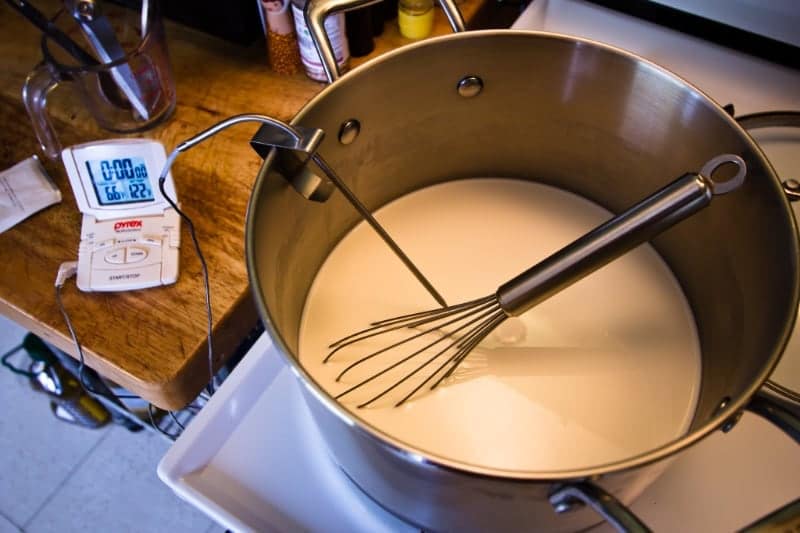
Start by pouring milk into a large, heavy-based pot. Slowly heat it to 86°F (30°C). You can do this on a stovetop. Make sure you constantly stir the milk to prevent scorching on the bottom of the pot.
Tip: Use morning milk for best results. It’s fresher and creamier.
Step 2 – Acidify the Milk

One way to acidify the milk is by adding vinegar to it. Another way is to add cultures (friendly bacteria) to it.
This process turns lactose into lactic acid. You will also notice that the flavor of the cheese will begin to develop.
Step 3 – Curdle the Milk

Now’s the time to change the texture of the milk. Mix a coagulant, like rennet, to the milk. Wait until a solid curd forms.
Tip: To see whether the curd is done forming, press onto its surface.
Step 4 – Cut the Curds
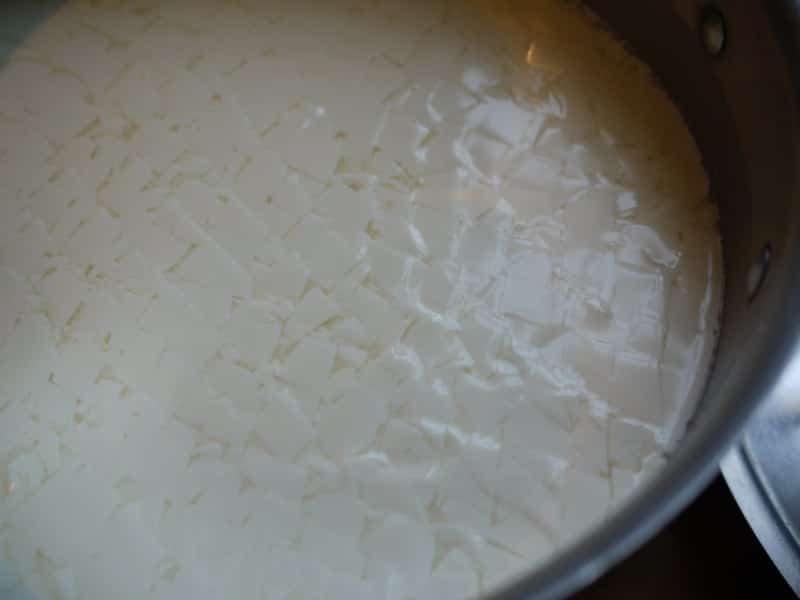
Next, cut the curds into small cubes using a long curd knife. This will help separate the whey from the curds.
Large curd chunks retain more moisture, and that means the cheese will be moist. If you need drier cheese, cut smaller pieces.
Step 5 – Process the Curds
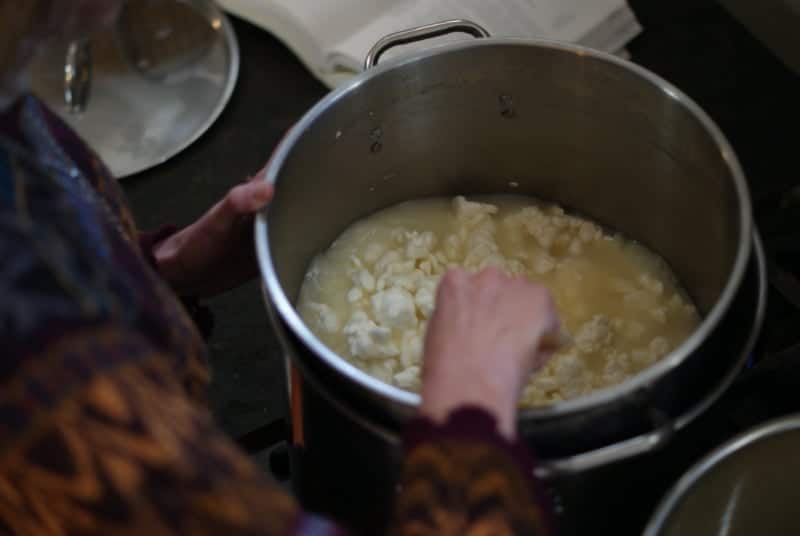
This step will involve stirring and cooking the curds. It will help release moisture and make your cheese drier.
You will also need to wash the curds and replace whey with water. Washed curd cheeses taste milder, sweeter, and more elastic.
Step 6 – Drain the Whey

It’s time to remove the whey completely. So, pour the contents of the pot through a strainer. This will leave you with only the solid chunks of curd.
Tip: To get harder and drier cheese, put pressure on the curd to force more whey out.
Step 7 – Season the Cheese
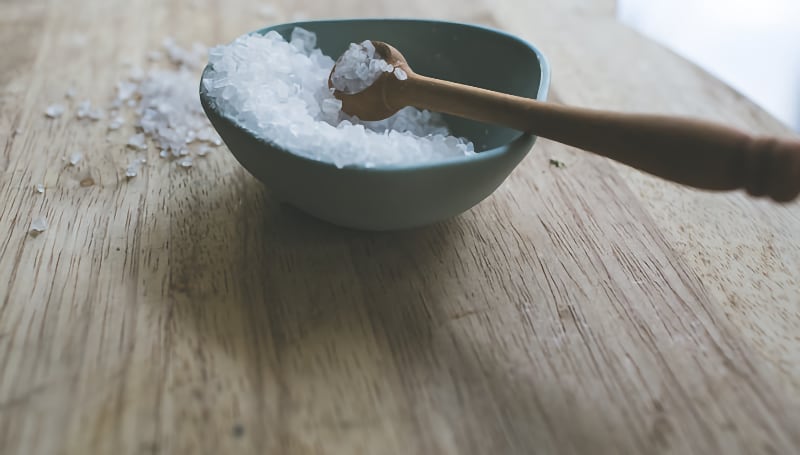
Here’s where you give the right flavor to your cheese. You can simply sprinkle salt over your cheese. Or you can brine it for some time.
And if you have a thing for herbs, add dill, rosemary, basil, chives, and other microgreen herbs to it. Experiment further with cloves, black pepper, garlic, and paprika to intensify the flavors.
Your homemade cheese is ready to be eaten!
Making Cream Cheese the Easy Way
Cream cheese is a fresh and creamy cheese that goes perfectly with both savory and sweet dishes. Use it to make superb dips, spreads, and even frostings.
You can easily make cream cheese at home by following this step-by-step guide.
Step 1 – Heat the Milk
Start by pouring the milk into a pot. Heat and bring it to a boil. Use full-fat milk for a much creamier feel.
Step 2 – Culture the Milk
Turn off the heat and thoroughly stir in a packet of culture. Alternatively, you can add lemon juice or vinegar to it.

Set it aside for some time while the milk curdles.
Step 3 – Strain the Mixture
Once the milk has curdled and the whey has separated, you’ll need to strain the mixture. Use a piece of butter muslin or a tea towel.
Tip: Squeeze the cloth to allow all the whey to drain.
Step 4 – Blend the Strained Milk
Once the strained milk has reached the right consistency, blend it in a food processor. Within a minute or two, you’ll get a light and fluffy cream cheese.
Step 5 – Add Flavorings
Add salt to enhance the flavor of your cream cheese. You can also give a try to herbs and spices.
Your cream cheese is ready. Make sure to refrigerate it and use it within a week.
Making Dairy Free Cheese
Dairy-free cheese is a great substitute for all the vegans/lactose-intolerant peeps out there who have an uncontrollable craving for cheese.
It tastes fab, is easy to make, and will save you a ton of money, too.
Follow this step-by-step guide to make dairy-free cheese.
Step 1 – Choose and Soak Your Grains
You can choose grains like wheat, barley rice, etc. They come with their own natural culture. Soak and rinse the grains over a few days. You will notice that they’re beginning to sprout.
Next, put the sprouted grains in a jar of water at normal room temperature. This will begin the process of fermentation.
Step 2 – Soak Some Cashews
Soak about two cups of cashews in another jar. Leave them for six to eight hours till they soften.
Step 3 – Blend Cashews and Culture
Pour the grains and soaked cashews into a food processor. Blend them until you get a smooth paste.
Then transfer the paste into a bowl and cover it.
Step 4 – Allow the Paste to Ferment
Let the grain-and-cashew paste ferment for a couple of days. Leave it at room temperature. Soon, the paste will turn somewhat tangy and you’ll know your vegan cheese is ready!
When the taste seems right to you, refrigerate your cheese.
Making Paneer at Home
Paneer, or cottage cheese, is made from curdled milk. It’s a great source of protein for vegetarians.
And if you’re into Indian cuisine, you can also use it to make tasty dishes like butter paneer, paneer pakora, paneer tikka, etc.
But first, let’s learn how to make paneer step-by-step.
Step 1 – Heat the Milk
To turn milk into paneer, you’ll first need to heat it and bring it to a boil. Stir it occasionally to prevent it from burning or forming cream on top.
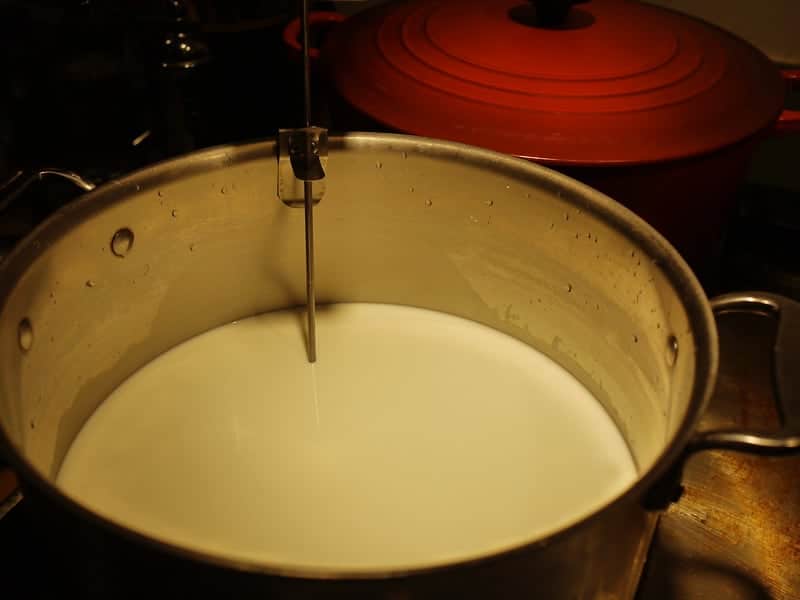
Tip: Add some cream to the milk if you want creamier paneer.
Step 2 – Acidify and Curdle the Milk
After the milk boils, pour about two tablespoons of lemon juice in it. You can alternatively use yogurt or vinegar. Give it a good stir for a minute.
You’ll notice that the milk will start curdling and separating from the whey.
Step 3 – Strain the Curd
Turn off the heat when the milk has curdled completely. Now, pour the curdled milk over a piece of muslin cloth and let the whey drain.
Then rinse the paneer well under running water. It will help you get rid of the vinegar smell or the sourness of lemon juice. Squeeze off the excess water.
Step 4 – Create a Paneer Block
For a well-shaped paneer block, fold the muslin cloth. Then place a heavy object on top of it for twenty minutes or so to let it set.
Once ready, cut the paneer block into cubes. Your homemade paneer is ready to be made into mouthwatering delights.
Smoking Cheese
Smoked cheese has a unique smoky flavor that will boost the taste of your pasta and burgers. You can also smoke a block of cheese, wrap it well, and gift it to your loved ones.
Here’s how to smoke cheese at home.
Step 1 – Pick Your Cheese
You can smoke just about any kind of cheese, including Swiss, mozzarella, gouda, and cheddar. Pick the one you want to smoke and neatly cut it into blocks.
Step 2 – Set Up the Smoker
Now, light your smoker or grill. Cheese is notoriously melty, so make sure the temperature doesn’t go beyond 90°F (32°C).
Tip: For best results, ensure that the cheese is not cold as that will cause condensation.
Step 3 – Load the Cheese
Place the cheese blocks on a rack inside your smoker. Close the lid and let them smoke for an hour. Now, flip over the cheese blocks and repeat the process for another hour.
Step 4 – Refrigerate the Cheese
After you’re done smoking the cheese blocks, wrap them well in parchment or butcher paper.
Refrigerate them for up to two weeks before indulging to let the harsh smoky flavor to turn mellow.
Cheese Wrapping Tips
Once you start making cheese at home, there’s really no stopping. But you will want to know the right way to wrap and store them, whether it’s a delicious wedge of cheddar or some fresh mozzarella.
Follow these simple tips to keep your cheese as fresh as possible for a long time.
- Steer clear of plastic wraps. That’s because plastic will give a wet and moldy flavor to your cheese.
- Always re-wrap cheese in waxed or parchment paper. These papers allow the cheese to breathe while also protecting it from drying out.
- Double-wrap pungent cheeses like blue cheese to keep their aromas from permeating other foods.
- For hard and aged cheeses, make sure you wrap them first in parchment paper and then add a layer of plastic.
- Don’t wrap the cheese too tightly or too loosely. Else, you’ll end up with either moldy or dried out chunks.
- For cheeses that sweat a lot, you’ll need to replace the paper every once in a while to keep them fresh for a long time.
Making Cheese Commonly Asked Questions
Making cheese at home can be a complex process. It has tons of steps involved.
So, if you find yourself stuck somewhere, don’t worry. We have answered some of the most frequently asked questions that may help you, too.
How to make cheese at home?

Making cheese at home is fun and easy. You will need milk, starter cultures, rennet, etc. along with some basic cheese-making equipment.
First, heat the milk. Then acidify it, let it curdle, cut the curds, and drain the whey. You’ll also need to cook the curds and salt them.
For detailed instructions, read our easy step-by-step guide for making cheese.
How does milk turn into cheese?

The simple answer is: through fermentation. In other words, the controlled spoilage of milk makes cheese. Milk is liquid while cheese is not.
When bacteria and enzymes are added to milk, they solidify milk proteins and fat. They are further processed to make the cheese as we know it. Read more about the process of making cheese.
What equipment do I need to make cheese?

For making cheese at home, you will need basic equipment like a large pot, thermometer, skimmer, curd knife, muslin paper, cheese moulds, and measuring cups and spoons.
For more information, check our list of tools and supplies for making cheese.
Say Cheese!
What’s the first thing that comes to your mind when you hear the word cheese? Delightful flavors and textures?
Or the supermarket counters filled with all the different varieties of cheese? Or maybe expensive gourmet cheeses you would rather skip?
Maybe the first thing that comes to your mind when you hear the word cheese is how you can make some. And why not?
Making cheese at home can be a fun pastime. It will also save you a lot of bucks and keep you fit.
Homemade cheese is free from artificial ingredients and harmful additives. Plus, it doesn’t have preservatives used to extend its shelf life.
You can start small and then make larger quantities of cheese. And you can also experiment with different varieties like cheddar, mozzarella, brie, parmesan, etc.
With just the right ingredients, equipment, and steps you can start making excellent cheeses at home. You will love the process just as much as the yummy result.
Do let us know how cheese-making goes for you. And if you have some more cheese-related questions, ask us in the comment section below. We’ll be glad to help.
Say cheese and start making some!

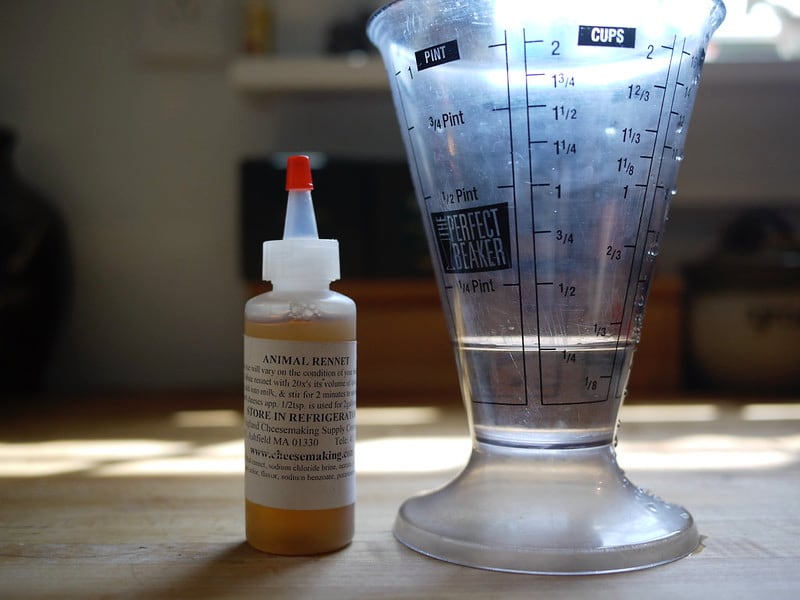


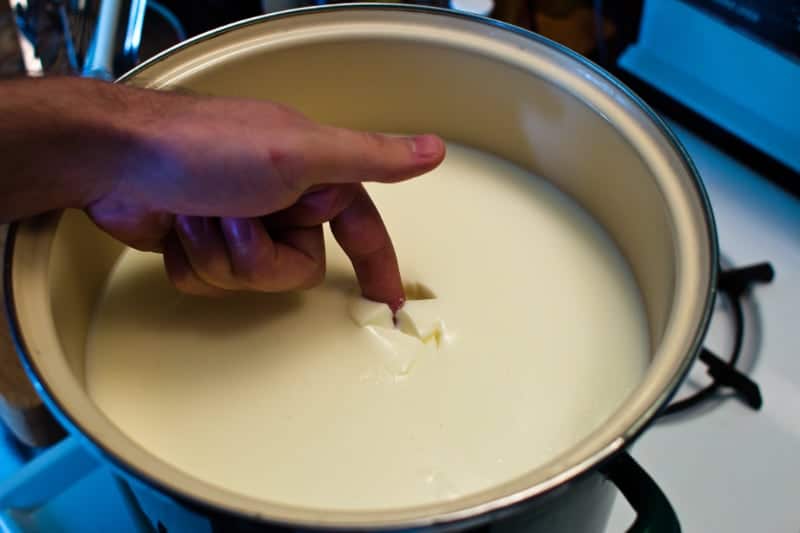






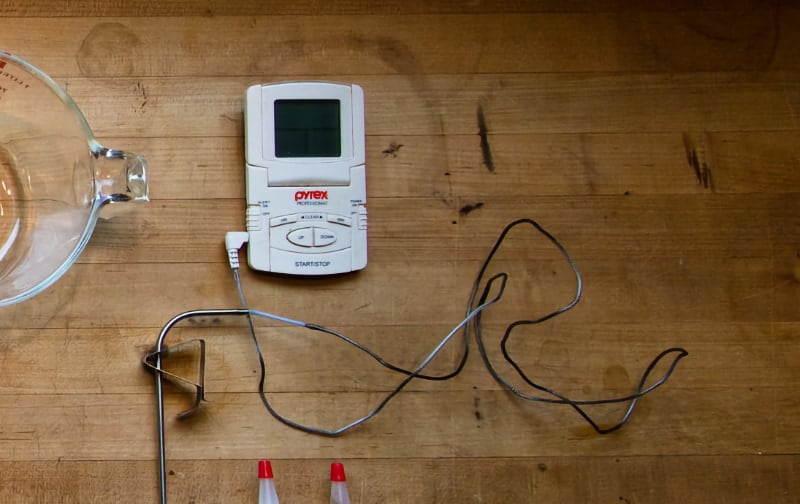





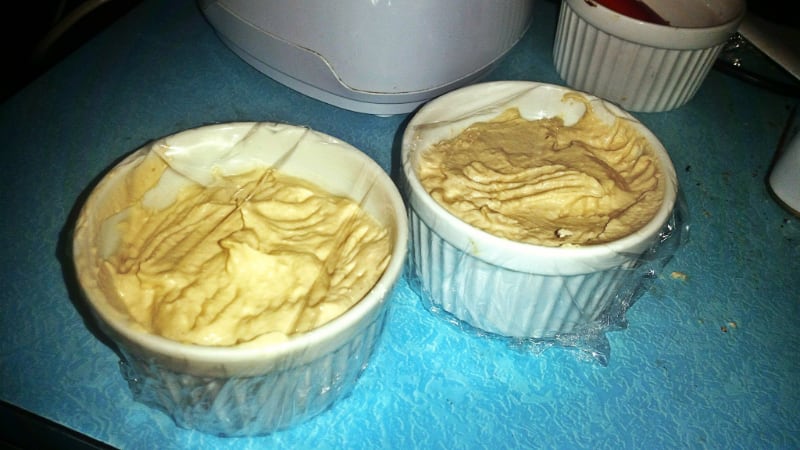







Leave a Reply